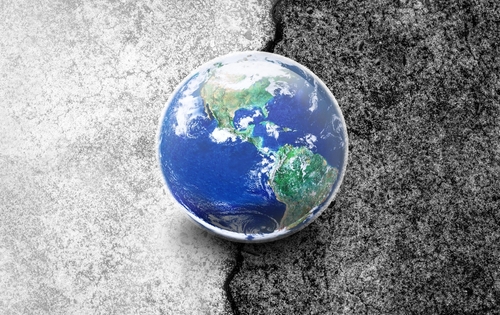A personal insight into COP26 (part 2)
Richard M Oblath PhD CEng FIMMM FEI, Chair of IOM3 Energy Transition Group reflects on the second week of COP26 from Glasgow.

During my virtual attendance at various COP26 meetings, (some hybrid, some public and some private mostly under the Chatham House rule) in the concluding week of the climate talks, I was struck by the rapid shift from speeches by global leaders and headline grabbing announcements in week one. The Global Methane Pledge and Glasgow Financial Alliance for Net Zero (GFANZ) by those accountable for US$130 trillion of global assets to focused and very difficult negotiations in week two to reach a consensus by almost 200 countries on a final agreement and communique.
Before discussing the highlights of this concluding output, there was one major announcement and surprise in the second week when the USA and China agreed to “enhance ambition” on climate change, issuing a joint statement in which both countries agreed to do more to cut emissions this decade and in which China also committed for the first time to address emissions from methane. In addition, China also agreed to phase down coal consumption during its 15th Five Year Plan, which starts in 2026.
The key final agreements coming out of COP26 that were enshrined in the Glasgow Climate Pact included:
Carbon trading rules
6 years since Article 6 was left as aspiration, rules were agreed on international carbon trading. This brings clarity and standardisation to companies that should help reduce emissions, with some tightening still likely required to allow complete transparency.
Methane pledge
For the first time in a pact there is a reference to methane signed onto by more than 100 countries. They have agreed to focus on rapidly reducing (initially by 30% this decade) these emissions, which are 86 more potent a greenhouse gas than CO2. China was not involved in the 100+ countries but methane was included in the US/Chinese agreement.
Financial
As well as the positive benefit that will accrue from the formation of the GFANZ group there was significant criticism by many countries due to the shortfall in the promises by the developed world, at COP21 in Paris, to provide US$100 billion a year by 2020 to the developing world to promote the reduction of greenhouse gases. Despite some additional commitments in the past few months, it was recognised that this level will only be reached by 2023. Adaptation to the ravages of climate change already being experienced especially in low lying coastal regions and many island nations, plus the increasing severity of storms and heatwaves was a topic that came to the forefront during the Glasgow conference. An agreement was reached to develop significant funds (the developing world pushing for grants not loans) in the next year targeting in the range of US$40 billion to be finalised at COP27 in Egypt.
Deforestation
Another first was the agreement by the parties including Brazil, Indonesia, Canada, and Russia to end and reverse deforestation by 2030. There were well over 100 countries that signed this pledge and it was included in the Glasgow Climate Pact.
Coal
Despite a last-minute change driven by India with the full support of the US and China to water down the language in the Pact from “phasing out” to “phasing down” coal power (note this is the same language used in the bilateral US/China agreement), this is still significant as this is the first mention of coal in a COP text. Although it falls short of the goal of “consigning coal to history” it went further than the G20 discussions just before COP26 and sends a very clear signal of intent.
Sense of urgency
There was a general agreement that actions not just promises were needed to be demonstrated and that implementation paths required continuous improvement and greenhouse gas reductions must be verifiably and transparently measured. New rules were introduced to allow for greater scrutiny on emissions reporting with the next round of Nationally Determined Contributions (NDCs) to be made ahead of COP27 in a year and thereafter also annually rather than the 5-year gap previously agreed at COP21.
The bottom line
Ahead of the COP21 meeting in Paris in 2015 the world was on a path to a probable temperature rise of approaching 6C by 2100. In the years since, actions have been taken to reduce these projections to 2.7C coming into the COP26 meeting in Glasgow. If all the commitments made in Glasgow were implemented and achieved this would leave the world on course for 1.8C keeping 1.5C in reach. The real immediate task is for each government to return home, pass legislation and deliver on the promises made.







